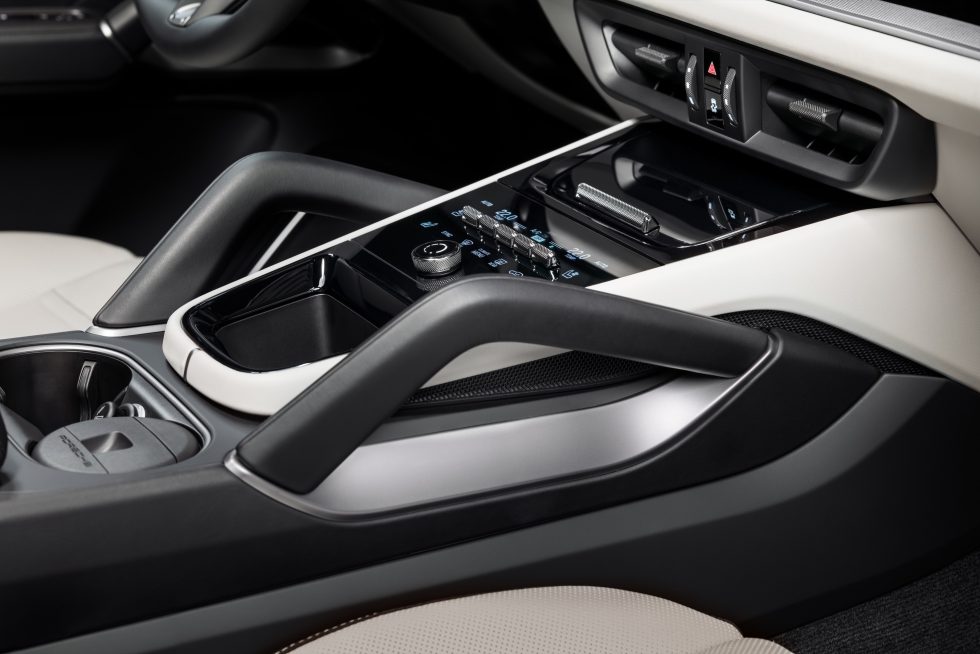
Porsche
Something many of us can agree on is that there are too many touchscreens in modern cars. They’re distracting to use, particularly when it’s for often-used things like the car’s climate controls. Consider this a feel-good story then, because Porsche has shown us the interior of its next Cayenne SUV, and it seems that in Stuttgart, buttons are back on the menu. Some, at least.
An almost entirely touchscreen user interface was probably Porsche’s only misstep with the otherwise-excellent Taycan. Indeed, when Audi used that car’s platform to make its own electric express, the e-tron GT, it was notable that the climate control touchscreen was gone, replaced with actual buttons to make it hotter or cooler, more or less windy. There’s no need to use a touchscreen to aim the air vents in an e-tron GT, either, unlike in a Taycan.
It is therefore encouraging to see that Porsche’s design team is listening to feedback, because in many other ways the refreshed interior of the Cayenne incorporates a lot of Taycan-like touches.

Porsche
The elegant curved main instrument display is free of a shroud or binnacle, just like in the electric Porsche. (An anti-glare coating applied to the screen’s surface means it’s always readable, even on a sunny day wearing sunglasses.)
The steering wheel will be familiar if you’ve sat in a Taycan—or a Porsche 911, for that matter. So, too, the knurled metal lever you use to engage forward or reverse, as the familiar shift lever has now retired from one more Porsche.
But the air vents are manually aimed once again, and there are physical switches to control temperature and ventilation on the center console. Hallelujah.

Porsche
I asked Porsche what precipitated the change, and in the wake of the Taycan, how does it decide what controls belong on a touchscreen and what ought to have its own dedicated switch or button or knob?
“So we have two things that are important to us. So first… we look, for example, at things that come from our heritage that were analog and that are very important to give you this brand identity. So, for example, the drive mode switch is a good example there,” explained Ivo van Hulten, Porsche’s director of user experience design.
(Van Hulten prefers to use the term driver experience “because we have a big sports car heritage, we are a sports car brand, we decided to call it driver experience. Because we say for [Porsche], the driver is definitely the most important person in the car,” he said.)

Porsche
“There are also other things where we have customer feedback all the time. So we learn from how people operate our systems—if you want, you can, by checking [a box], give your data back to Porsche, and then we learn from that,” he told Ars.
“But we also do extensive research with our customers. We do a lot of those sessions all over the world, in all markets—also in the US. So, for example, we know that also in the US, physical controls for climate control are very important.
“I think maybe with the Taycan, it was very important for us to sort of liberate ourselves from the past and show then what our capabilities are with designing a full battery vehicle, which was the first one that we ever built. But maybe it was so digital that for this generation [of Cayenne], we learned that we want to add a little bit more of analog flavor again,” van Hulten said.

Porsche
It’s far too early for Porsche to share details about the Taycan’s midlife update, but my guess is that when we see the face-lifted Porsche EV in a year or two, it might have also joined the Campaign to Bring Back Buttons.








